Nicola Reavley
See book keywords and concepts |
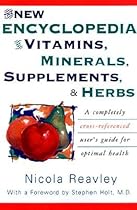 Licorice (Glycyrrhiza glabra)
One of the most widely used herbs, liquorice has an important place in both Western and Eastern herbal medicine. It has hormonal, anti-inflammatory, antiallergic, antibacterial and antiviral effects. Licorice has also been shown to stimulate the immune system.
Marshmallow (Althea officinalis)
Marshmallow has a reputation has a soothing, healing plant. It has demulcent, emollient, diuretic, anti-inflammatory and expectorant actions.
Uses
Marshmallow is used to treat stomach and duodenal ulcers, catarrh, coughs, colds and urinary tract infections. Licorice (Glycyrrhiza glabra)
One of the most widely used herbs, liquorice has an important place in both Western and Eastern herbal medicine. It has hormonal, anti-inflammatory, antiallergic, antibacterial and antiviral effects. Licorice has also been shown to stimulate the immune system.
Marshmallow (Althea officinalis)
Marshmallow has a reputation has a soothing, healing plant. It has demulcent, emollient, diuretic, anti-inflammatory and expectorant actions.
Uses
Marshmallow is used to treat stomach and duodenal ulcers, catarrh, coughs, colds and urinary tract infections. |
Christian Ratsch
See book keywords and concepts |
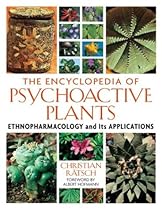 Today, the Yucatan Maya still use dream grass as an herbal medicine (Barrera M. et al. 1976). During the Aztec period, the plant was also used to treat "cold stomach" (Flores 1977, 8).
The herbage is used in Mexican folk medicine as a laxative and febrifuge. Teas made from the plant are used as appetite stimulants (once the bitter taste has disappeared from the mouth) and stomach tonics and are also beneficial for diarrheal diseases (Mayagoitia et al. 1986, 230). Today, the Yucatan Maya still use dream grass as an herbal medicine (Barrera M. et al. 1976). During the Aztec period, the plant was also used to treat "cold stomach" (Flores 1977, 8).
The herbage is used in Mexican folk medicine as a laxative and febrifuge. Teas made from the plant are used as appetite stimulants (once the bitter taste has disappeared from the mouth) and stomach tonics and are also beneficial for diarrheal diseases (Mayagoitia et al. 1986, 230). |
Nicola Reavley
See book keywords and concepts |
 Mushrooms
Mushrooms, including shiitake, maitake and reishi, are prized in Chinese herbal medicine, and are believed to increase resistance to stress and extend lifespan. These mushrooms can regulate blood pressure, glucose, insulin, cholesterol and triglycerides. They may boost immune function, kill viruses, and protect against cancer. These mushrooms can be used fresh and extracts are also available in capsule form. Mushrooms
Mushrooms, including shiitake, maitake and reishi, are prized in Chinese herbal medicine, and are believed to increase resistance to stress and extend lifespan. These mushrooms can regulate blood pressure, glucose, insulin, cholesterol and triglycerides. They may boost immune function, kill viruses, and protect against cancer. These mushrooms can be used fresh and extracts are also available in capsule form. |
| In the western world, in the last 10 to 20 years, there has been a tremendous growth in interest in herbal medicine and more natural and less toxic therapies have become increasingly popular. Scientific researchers have also produced a large amount of information on the use of plants and plant substances as medicinal agents. Much of this information provides scientific validation for the uses of plants which have been known to healers for thousands of years.
While herbs are, in many cases, free of the side effects of pharmaceutical drugs, they must be used appropriately. |
| Many HIV-positive people use alternative treatments such as relaxation, touch, spiritual and selfhelp therapies. herbal medicine, acupuncture, homeopathy and dietary therapies are also popular.
Diet and HIV
The progression and physical symptoms of HIV disease are affected by diet. It is very important to eat foods which enhance immune function and to avoid foods and other substances which may cause damage. (See page 422 for more information. |
Berkeley Holistic Health Center and Shepherd Bliss
See book keywords and concepts |
| Chinese herbal medicine relies on complex herbal formulas that are designed to balance the body's energy flow.
The Golden Age of Herbalism in England
In western Europe, herbalism was practiced in ancient Greece and Rome. Hippocrates, who is regarded as the father of Western medicine, used herbs in conjunction with diet, fresh air, and exercise.
English herbalism was grounded in the elf magic of the Saxon culture, whose mystical beliefs were steeped in a deep involvement with plants. The sacred herbs in the Saxon tradition were mugwort, plantain, chamomile, nettles, chervil, and fennel. |
| Such a holistic approach to health will involve a whole range of therapies—from psychological and social counseling to "bodywork," various techniques of relaxation, nutritonal therapy, herbal medicine, etc. It will, of course, also include standard medical therapies.
Similarly, a holistic approach to peace will consist largely in finding healthy, nonviolent ways of conflict resolution. This will mean, first of all, developing a holistic view of the network of economic, social, and political patterns out of which conflicts arise. |
Ralph W. Moss PhD
See book keywords and concepts |
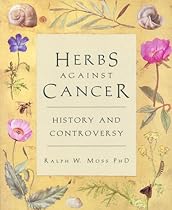 The regular medical profession abhors secrecy, however, and therefore this issue has long been herbal medicine's Achilles' heel.
John King
The history of Eclecticism is tied up with a plant familiar to students of cancer therapy, namely the mayapple {Podophyllum pehatum). In 1835, a young Eclectic physician, John King, MD (1813-1893) was preparing a water-alcohol extract of a mayapple root. Leaving the preparation unfinished, the next morning he and his colleagues discovered fragments of dark, brittle stuff floating in the mix. The regular medical profession abhors secrecy, however, and therefore this issue has long been herbal medicine's Achilles' heel.
John King
The history of Eclecticism is tied up with a plant familiar to students of cancer therapy, namely the mayapple {Podophyllum pehatum). In 1835, a young Eclectic physician, John King, MD (1813-1893) was preparing a water-alcohol extract of a mayapple root. Leaving the preparation unfinished, the next morning he and his colleagues discovered fragments of dark, brittle stuff floating in the mix. |
Schuyler W. Lininger, Jr. DC
See book keywords and concepts |
 Some doctors who use herbal medicine suggest applying creams or ointments containing glycyrrhetinic acid 3 or 4 times per day. Licorice root may also be taken as a tincture in the amount of 2 to 5 ml 3 times daily.
Numerous other herbal preparations are used topically to relieve the redness and itching of eczema. A cream prepared with witch hazel (p. 470) and phosphatidyl choline (p. 307) has been reported to be as effective as 1% hydrocortisone in the topical management of eczema, according to one double-blind study. Some doctors who use herbal medicine suggest applying creams or ointments containing glycyrrhetinic acid 3 or 4 times per day. Licorice root may also be taken as a tincture in the amount of 2 to 5 ml 3 times daily.
Numerous other herbal preparations are used topically to relieve the redness and itching of eczema. A cream prepared with witch hazel (p. 470) and phosphatidyl choline (p. 307) has been reported to be as effective as 1% hydrocortisone in the topical management of eczema, according to one double-blind study. |
Richard Gerber, M.D.
See book keywords and concepts |
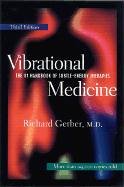 While I had always been fascinated by acupuncture, herbal medicine, and laying-on-of-hands healing, which was then called "paranormal healing," my interest really peaked when I entered Wayne State School of Medicine in 1976.
At that time, I heard about a manuscript called "A Course in Miracles" that was quietly circulating in Xerox form throughout the United States. (As an aside, it should be noted that j4 Course in Miracles was eventually published in book form on Valentine's Day, February 14th. While I had always been fascinated by acupuncture, herbal medicine, and laying-on-of-hands healing, which was then called "paranormal healing," my interest really peaked when I entered Wayne State School of Medicine in 1976.
At that time, I heard about a manuscript called "A Course in Miracles" that was quietly circulating in Xerox form throughout the United States. (As an aside, it should be noted that j4 Course in Miracles was eventually published in book form on Valentine's Day, February 14th. |
Joe Graedon and Teresa Graedon
See book keywords and concepts |
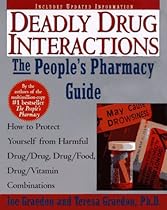 Feverfew
Feverfew is a European herbal medicine from the Greek tradition. Like many other medicinal herbs, it has recently enjoyed a strong revival of interest. Some people recommend it for the prevention of migraine headaches, and there is research to indicate it is more effective for this purpose than a placebo.12 There are worrisome reports of a rebound syndrome in those who stop feverfew suddenly, however, and an interaction with anticoagulants such as Coumadin is suspected, although it hasn't been studied. Feverfew
Feverfew is a European herbal medicine from the Greek tradition. Like many other medicinal herbs, it has recently enjoyed a strong revival of interest. Some people recommend it for the prevention of migraine headaches, and there is research to indicate it is more effective for this purpose than a placebo.12 There are worrisome reports of a rebound syndrome in those who stop feverfew suddenly, however, and an interaction with anticoagulants such as Coumadin is suspected, although it hasn't been studied. |
Richard Gerber, M.D.
See book keywords and concepts |
 Among the earliest known records describing the practice of herbal medicine is the Pen Ts'ao. This document, left by an ancient Chinese herbalist, dates back to the year 2800 B.C. and lists 366 plant drugs used to heal various ailments. Perhaps the most famous of the early herbal medical textbooks was the original Materia Medica. It was created in the first century A.D. by Pedanius Dioscorides, an army surgeon from Asia Minor. Among the earliest known records describing the practice of herbal medicine is the Pen Ts'ao. This document, left by an ancient Chinese herbalist, dates back to the year 2800 B.C. and lists 366 plant drugs used to heal various ailments. Perhaps the most famous of the early herbal medical textbooks was the original Materia Medica. It was created in the first century A.D. by Pedanius Dioscorides, an army surgeon from Asia Minor. |
| Perhaps there are important energetic healing factors which have been left out in the scientific transformation of herbal medicine to drug therapy. Perhaps it is time to integrate the Einsteinian concept of matter as energy into our system of disease intervention. The Einsteinian view of matter as energy may present new reasons for re-examining the healing properties of the natural plants from which today's synthetic drugs were derived. |
| Drug therapy has become the more scientifically acceptable offshoot of herbal medicine because it is based on a Newtonian rationale of molecular interactions. The problem with validating energetic mechanisms of homeopathic agents is that the subtle energies which are responsible for their therapeutic effects are difficult to measure with present-day medical technologies. Also, in order to understand the effectiveness of homeopathic remedies in treating illness, one must accept a subtle energetic philosophy of dis-ease and health. |
David Heber, M.D., Ph.D.
See book keywords and concepts |
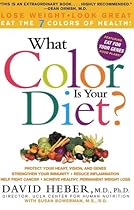 In European herbal medicine kava kava has been used for mild anxiety states, nervous tension, muscle tension, and mild insomnia. In Utah, a state where alcohol is restricted, the highway patrol supposedly stops young motorists returning from kava kava parties for driving under the influence. The active ingredients are kavalactones, and these are used to standardize preparations. Kava kava is commonly used as a social beverage in Fiji, and offers relaxation and stress reduction to many westerners who now use this herb on a regular basis for anxiety, tension, and stress. In European herbal medicine kava kava has been used for mild anxiety states, nervous tension, muscle tension, and mild insomnia. In Utah, a state where alcohol is restricted, the highway patrol supposedly stops young motorists returning from kava kava parties for driving under the influence. The active ingredients are kavalactones, and these are used to standardize preparations. Kava kava is commonly used as a social beverage in Fiji, and offers relaxation and stress reduction to many westerners who now use this herb on a regular basis for anxiety, tension, and stress. |
| Today we have a mature herbal medicine system in Germany where a book called The German Commission Monograph E specifies methods of manufacturing a discrete number of commonly used herbs. Many of the best-selling herbs in the United States are drawn from these. American consumers who have never tried herbs may certainly feel the desire to try to reap some of the benefits they have heard about. But they remain skeptical, in large part due to concerns about safety and also about actually getting the type and amount of herb listed on the labels of these products. |
Kenny Ausubel
See book keywords and concepts |
 When Time magazine published a 1998 cover story on "The herbal medicine Boom," the report was tellingly positioned as a business story. An estimated sixty million Americans are now using medicinal herbs in a market exceeding $4 billion, characterized by an annual 35 to 40 percent growth rate.3 The aggregate stock value of publicly held herb companies went up 44 percent in 1997, the highest of any category except top-performing high-technology stocks. When Time magazine published a 1998 cover story on "The herbal medicine Boom," the report was tellingly positioned as a business story. An estimated sixty million Americans are now using medicinal herbs in a market exceeding $4 billion, characterized by an annual 35 to 40 percent growth rate.3 The aggregate stock value of publicly held herb companies went up 44 percent in 1997, the highest of any category except top-performing high-technology stocks. |
| Accelerating the renaissance of herbal medicine is the steady validation of certain herbs for serious medical conditions. Ginkgo, reputedly the oldest tree in the world, has been found effective against Alzheimer's disease in studies in Germany. Even a more reserved study published in 1997 in the AMA Journal showed its effectiveness in limiting symptoms associated with Alzheimer's. The National Center for Complementary and Alternative Medicine is now preparing to launch a $15 million study of its effects on dementia.6
St. John's wort has made headlines for its efficacy against depression. |
| The leading nonprofit research and education organization on herbal medicine in North America. Publisher of HerbalGram, the highly acclaimed peer-reviewed quarterly journal that takes no industry advertising. ABC's Herbal Education Catalog has over 500 books, monographs, CD-ROMs, videos, and audiotapes for health professionals and laypeople. Web site has lots of highly credible information, and a wide variety of resources and links.
Francis Brinker, N.D. Botanical Consultant 6417 E. Hayne Street Tucson, AZ 86710 (520) 747-1898 [email protected]
Dennis J. McKenna, Ph.D. |
| I had been to China a couple of times, where herbal medicine is an art, and worked with Native American tribes in the Southwest. I was really coming from a point of view of folk medicine, cultural medicine, and people's right to natural treatments that were basically harmless."6
Catherine subsequently earned a master's degree and Ph.D. in nursing, with a specialty in researching alternative therapies, and then joined the faculty of Oregon Health Sciences University, a large nursing college and leading research institution. By 1997 she was ready to pursue the Hoxsey research. |
Robyn Landis
See book keywords and concepts |
 Much of the herbal medicine originally developed here died with the native peoples. There certainly are some experts who continue to study what was recorded, and some knowledge has been saved. But there aten't many people left who know the indigenous native plants of this area.
Therefore, much of what North American herbalists know is a fusion of what native herbalists from all over the world have learned in the context of their local healing systems. Fottunately, because each of the systems has so much to offer, this blending has yielded a powerful brand of medicine.
WHAT ARE HERBS? Much of the herbal medicine originally developed here died with the native peoples. There certainly are some experts who continue to study what was recorded, and some knowledge has been saved. But there aten't many people left who know the indigenous native plants of this area.
Therefore, much of what North American herbalists know is a fusion of what native herbalists from all over the world have learned in the context of their local healing systems. Fottunately, because each of the systems has so much to offer, this blending has yielded a powerful brand of medicine.
WHAT ARE HERBS? |
Gary Null
See book keywords and concepts |
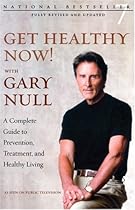 In 1958 Chairman Mao urged that China's traditional sciences of herbal medicine and acupuncture should not be abandoned; China's goal now is to develop a medicine which combines both the ancient and the new. For instance, herbal tonics are often used to strengthen a patient's ability to cope with modern chemotherapy. Russia has been committed to research on herbs, carrying out hundreds on Siberian ginseng alone, which has even been used to combat stress on Russian cosmonauts. In 1958 Chairman Mao urged that China's traditional sciences of herbal medicine and acupuncture should not be abandoned; China's goal now is to develop a medicine which combines both the ancient and the new. For instance, herbal tonics are often used to strengthen a patient's ability to cope with modern chemotherapy. Russia has been committed to research on herbs, carrying out hundreds on Siberian ginseng alone, which has even been used to combat stress on Russian cosmonauts. |
| We combine herbal medicine with hydrotherapy to help the cysts drain out of the breasts. I use that treatment with a lot of women, and have had quite a good response."
YOGA Dr. Gary Ross, a family physician and certified yoga instructor, recommends yoga poses, meditation, and breathing exercises for alleviating fibrocystic breast disease brought on by stress and a sluggish thyroid. These three postures increase blood flow to the thyroid and chest area:
Shoulder stand. On a mat or thick blanket, lie flat on your back. You may choose to place a rolled towel under your neck. |
| In the 19th century, herbal medicine made a popular comeback. So broad and exaggerated were the claims made for various tinctures, potions, "patent" medicines, and favorite cure-alls like mandrake root, however, that this popularity only contributed to a medical bias against herbal remedies. Modern science's success in synthesizing powerful drugs and the advent of highly rational double-blind testing procedures has confirmed this bias further.
Recently there has been another rebirth of popular interest in herbal remedies. |
| Digitalin, used to treat heart disease, was isolated from the foxglove plant; quinine from the bark of the quinoa tree; salicylic acid (aspirin) from willow bark; and on and on.
But herbal medicine is by nature an inexact, individualized science. Herbs may work differently on different people; the conditions under which a plant has grown, the time at which it is harvested, or the form which its preparation takes may all modify its effect. |
Schuyler W. Lininger, Jr. DC
See book keywords and concepts |
 Other topical herbal preparations to consider based on traditional herbal medicine are chamomile (p. 409), calendula (p. 406), and chickweed (p. 411) creams. Chamomile and calendula have antiinflammatory properties, while chickweed is historically used to reduce itching. Research studies have not documented the efficacy of creams of any of these three herbs for people with eczema.
Although burdock (p. 405) root is listed in traditional herbal books for the treatment of eczema, there is little evidence to support its use for this condition. Other topical herbal preparations to consider based on traditional herbal medicine are chamomile (p. 409), calendula (p. 406), and chickweed (p. 411) creams. Chamomile and calendula have antiinflammatory properties, while chickweed is historically used to reduce itching. Research studies have not documented the efficacy of creams of any of these three herbs for people with eczema.
Although burdock (p. 405) root is listed in traditional herbal books for the treatment of eczema, there is little evidence to support its use for this condition. |
Ralph W. Moss PhD
See book keywords and concepts |
 Such "weirdness" has been used to smear herbal medicine in general.)
We also know that cancer existed in ancient Egypt. There is a possible histiocytoma in the skin of the heel and a squamous papilloma of the hand of an Egyptian mummy (423, 377). In fact, the Ebers Papyrus discusses cancer and makes a number of recommendations for its treatment. This included precursors of most of today's methods, including surgery, cautery, minerals, and herbs. Such "weirdness" has been used to smear herbal medicine in general.)
We also know that cancer existed in ancient Egypt. There is a possible histiocytoma in the skin of the heel and a squamous papilloma of the hand of an Egyptian mummy (423, 377). In fact, the Ebers Papyrus discusses cancer and makes a number of recommendations for its treatment. This included precursors of most of today's methods, including surgery, cautery, minerals, and herbs. |
Doreen Virtue, Ph.D.
See book keywords and concepts |
 Interestingly enough, cinnamon has been the base ingredient in Chinese herbal medicine for hundreds of years.6
— Are you craving peppermints? That means you're feeling lethargic and want to catch your second breath of peppy energy.
— Are you craving coffee candy? That means you are trying to push yourself past the point of exhaustion. Why not take a breather (or better yet, a nap)?
— Are you craving peanut brittle? This signals a frustration that your life lacks fun or recreation. You're also looking for a little sympathy or comfort.
— Are you craving caramel? Interestingly enough, cinnamon has been the base ingredient in Chinese herbal medicine for hundreds of years.6
— Are you craving peppermints? That means you're feeling lethargic and want to catch your second breath of peppy energy.
— Are you craving coffee candy? That means you are trying to push yourself past the point of exhaustion. Why not take a breather (or better yet, a nap)?
— Are you craving peanut brittle? This signals a frustration that your life lacks fun or recreation. You're also looking for a little sympathy or comfort.
— Are you craving caramel? |
Joseph Glenmullen, M.D.
See book keywords and concepts |
 Having been used for centuries in Chinese herbal medicine, ginkgo biloba has become popular in this country as a memory-enhancing agent. In their article in the Journal of Sex and Marital Therapy, Cohen and Bartlik report that ginkgo biloba improved libido, erectile functioning, and the ability to orgasm in patients with antidepres-sant-induced sexual dysfunction. The dosage of ginkgo biloba taken by the patients ranged from 60 to 240 milligrams a day. Having been used for centuries in Chinese herbal medicine, ginkgo biloba has become popular in this country as a memory-enhancing agent. In their article in the Journal of Sex and Marital Therapy, Cohen and Bartlik report that ginkgo biloba improved libido, erectile functioning, and the ability to orgasm in patients with antidepres-sant-induced sexual dysfunction. The dosage of ginkgo biloba taken by the patients ranged from 60 to 240 milligrams a day. |
Gary Null
See book keywords and concepts |
 Michael Tierra, author of Chinese Traditional herbal medicine, also recommends saw palmetto as herbal treatment of the prostate. However, drawing on the wisdom of Chinese medicine, he points out that there are different causes for prostate dysfunction. Thus, to treat the problem intelligently, one must begin with the cause.
If kidney deficiency is to blame, indicating a problem in the endocrine system, it is necessary to strengthen this system. Rehmannia Six or Eight, both Chinese herbal preparations, are called for. Six if for a yin deficiency; eight for a yang deficiency. Michael Tierra, author of Chinese Traditional herbal medicine, also recommends saw palmetto as herbal treatment of the prostate. However, drawing on the wisdom of Chinese medicine, he points out that there are different causes for prostate dysfunction. Thus, to treat the problem intelligently, one must begin with the cause.
If kidney deficiency is to blame, indicating a problem in the endocrine system, it is necessary to strengthen this system. Rehmannia Six or Eight, both Chinese herbal preparations, are called for. Six if for a yin deficiency; eight for a yang deficiency. |












